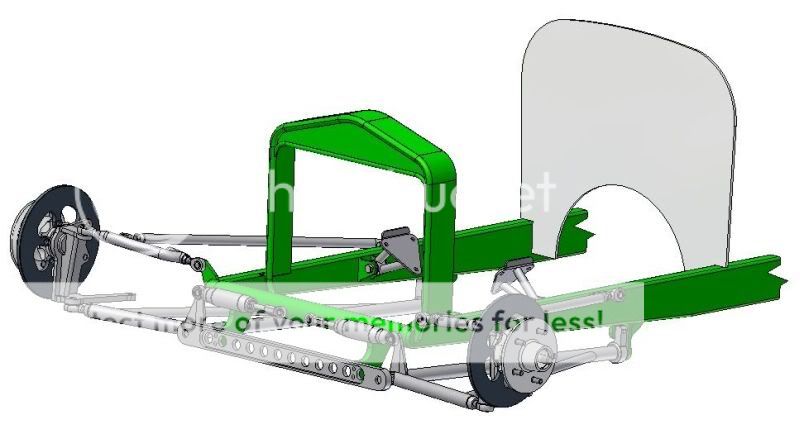one finger john
Active Member
Your "food for thought" is very tastey and I think it illustrates what I am saying. The illustration shows the front suspension in a loaded or normal ride height position. At full suspension travel, say 6 in., at the either end of travel you will have bind. But in the middle, where the car would normally reside, is there bind? Couldn't one double suspension travel (again from the normal 2 in. of solid axle travel to 4 in. of split axle travel) and realize an improvement? I know that suspension movement is important (understatement), and that an improvement within parameters of known suspension travel is still a benefit. Ma & Pa T have a R&P steering set up that works because it is it is installed properly and it works within the parameters of 2 in. suspension movement.This type of front end is basically what got the Corvair in trouble. It was the rear suspension on the Corvair got Ralph Naders panties in a wad. It is a swing axle type of configuration. The problem came in hard cornering. The tire contact on the ground and the axle pivot point that was higher led to the point that it could have a tendency to act as a lever and jack the car over on that side. I know that isn't a very good explanation. The Fatman version does have one advantage over the Corvair, the inner pivot point is closer to the center of the car and closer to the ground. That lowers the angle of attack of the jacking effect. The camber change problem is still a definite minus.
Here is a little food for thought:

As for your illustration, ever thought of telescoping upper control arms? Also, wouldn't the steering arms have to raised on the spindle to clear the lower bar of the four bar and fit between the frame rails and the lower bar? Would you use R&P? Just noticed, torsion bar.
John











